By Casey Mallinckrodt, Assistant Conservator
The conservation initiative in African art funded by the Andrew W. Mellon foundation is allowing the VMFA Conservation Center to deepen capacity by acquiring analytic equipment, engaging specialist consultants, and also by developing specialized expertise within the Conservation staff. This winter Assistant Conservator Casey Mallinckrodt participated in an intensive course in the microscopic identification of wood at the Scientific Research Division of the Royal Botanic Gardens Kew in London lead by Dr. Peter Gasson, as well as experts in the microanatomy of waterlogged wood and charcoal-of particular interest to the archaeologists on the course. Kew has an extensive xylarium and library of wood microscope slides dating from the mid-nineteenth century and including hardwoods of tropical Africa that were Casey’s primary interest.

Pictured Above: March 2, 2018 Royal Botanic Gardens Kew in a rare winter storm- “The Beast from the East”
Dr. Gasson is kneeling front right and Casey is third from the left.
Many Historic African objects now in museums were stripped of their cultural context when they were collected. The information we generate through technical analysis with related research conducted by our curatorial colleagues allows us to reconnect the objects to historic practices and cultural knowledge. Knowing the specific wood type may link an object to a community or region. It may have a key spiritual significance, medicinal, or utilitarian value. And the information allows us to compare our collection with others and with scholarly and historic records. In a subsequent blogpost Ashley Duhrkoop, Curatorial Associate, will elaborate on the cultural and spiritual associations of some woods used in creating African art.
Wood identification may also be important for museums receiving or sending loans across international borders. The Convention on International Trade in Endangered Species of Wild Fauna and Flora or CITES imposes restrictions that require documentation of woods and other regulated materials such as ivory. Although a professional wood anatomist is required to make a definitive identification, the capacity to determine “in house” that an object is not one of the CITES restricted woods can save time and the cost of outside wood analysis.
To examine wood microscopically, thin sections 15- 20 microns thick, are taken along three planes: transverse, radial, and tangential.
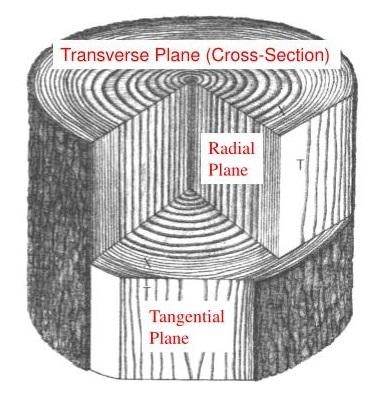
Pictured Above: Planes sampled for microscopic examination
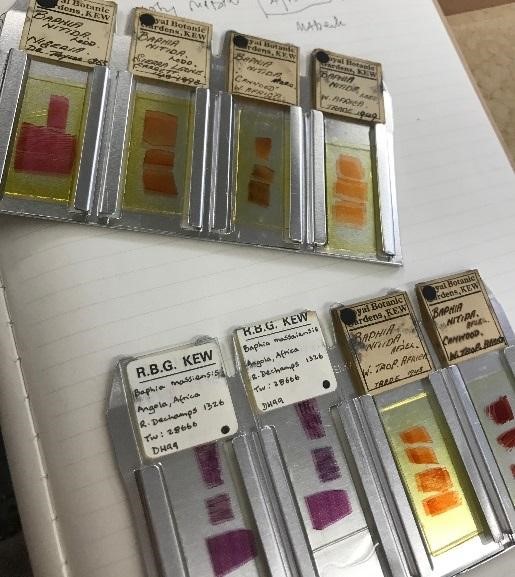
Pictured Above: Microscope slide wood samples at Kew
Conventionally a one-centimeter cube of wood is required, but with museum objects this is not possible. We look for splinters, previous damage, or less visible areas on the reverse or base where a 2.0 millimeter piece might be removed.
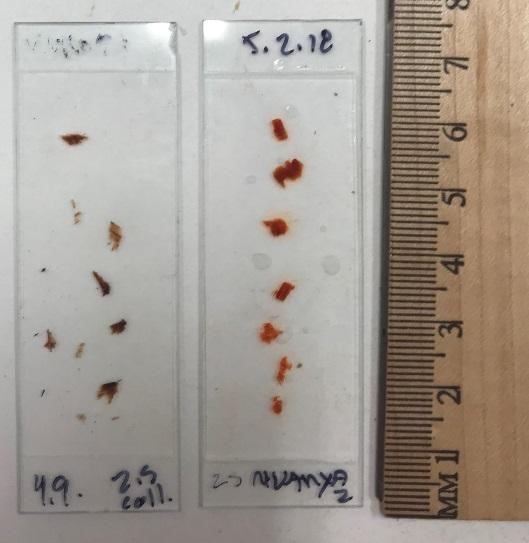
Pictured Above: Small sections made in the conservation lab
The features that can be identified are compared with databases of knowns examples. The most complete online data base is Inside Wood that uses two hundred twenty one features and characteristics determined by the International Association of Wood Anatomists (IAWA) insidewood.lib.ncsu.edu. Usually relatively few features are required to identify the primary possibilities. Because of the small sample size and the complexity of identifying tropical African hardwoods the identification may only be to the genus, not the species.

The micrographs picture below are from the Kongo Commemorative Portrait Head (above-VMFA 2006.9). The wood has been tentatively identified as Malvaceae, a family that includes Baobab and Balsa.
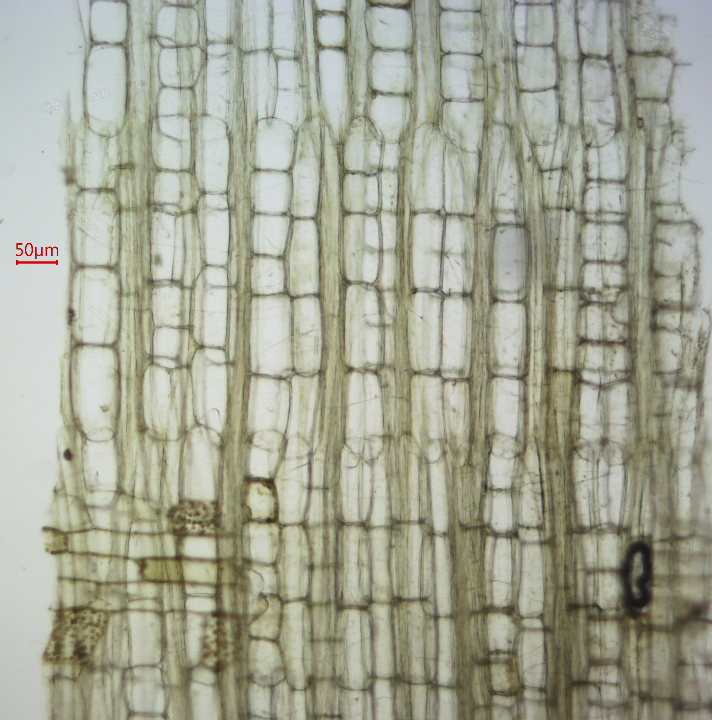

Pictured Above: Radial (left) and transverse (right) sections from the Kongo Portrait head, consistent with Malvaceae
In addition to creating micrographic documentation of wood from collection objects we are able to build a library of images using known samples and connect the indigenous name with the scientific plant name, for example Mukosa the Pende name for wood field-collected by art historian and African art scholar Dr. Zoë Strother has micro-anatomical characteristics consistent with the genus Erythrophleum.
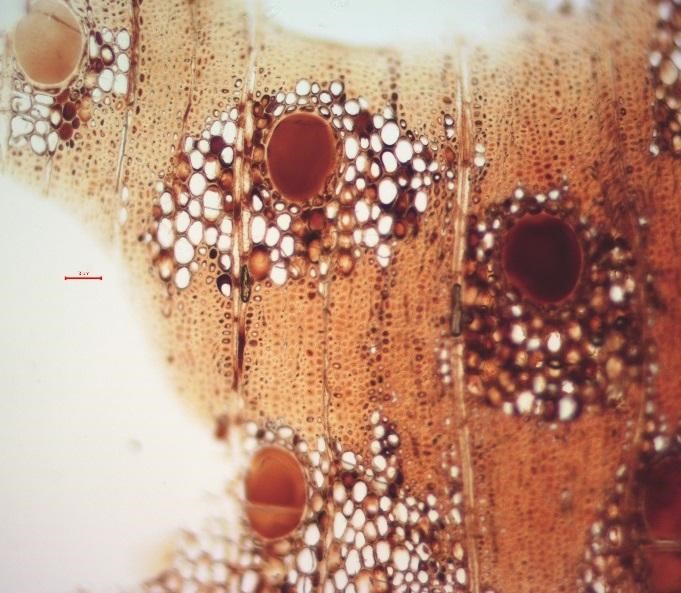

Pictured Above: Transverse (left) and tangential (right) section of Mukosa, possibly identified as Erythrophleum
Casey’s research interests in wood developed from previous work on ancient Egyptian coffins. Her chapter “The Deterioration of Archaeological Wood” will be published in fall 2018 in The Encyclopedia of Archaeological Studies edited by Sandra Lopez Varela and published by John Wiley & Sons.